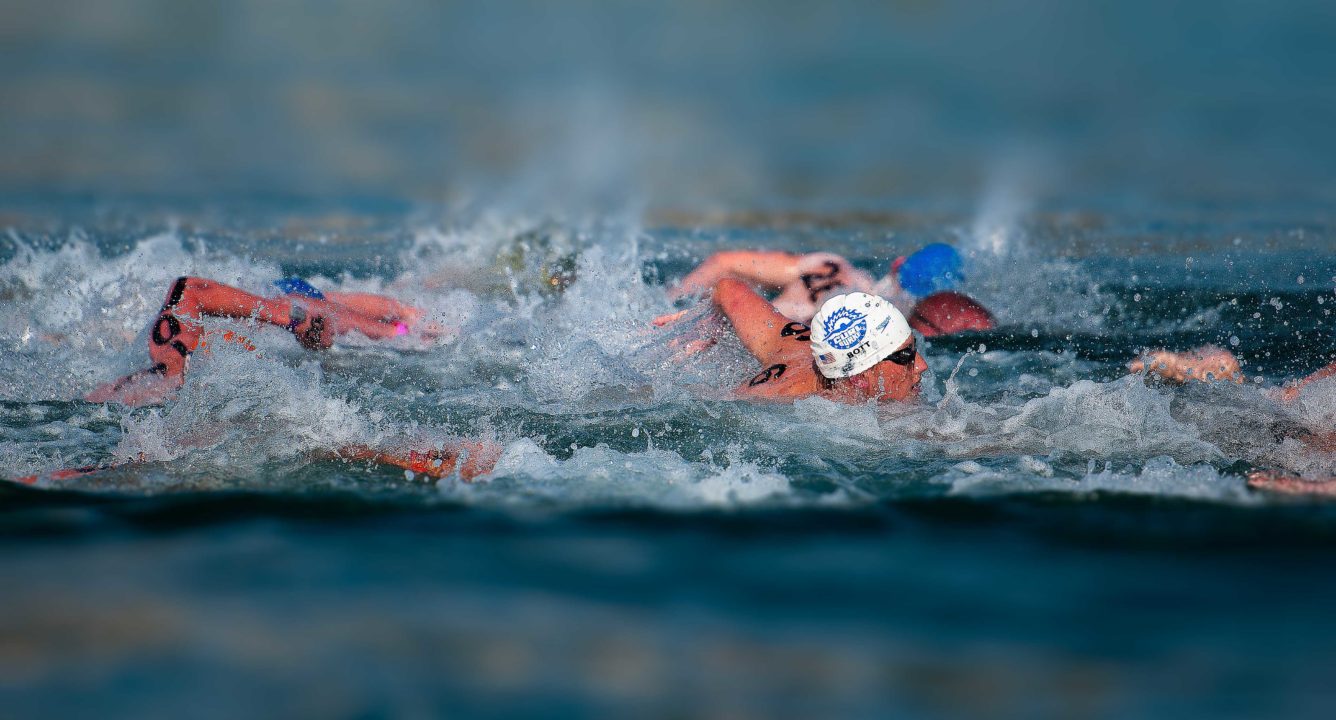The open water races in Barcelona feature the very best in the sport on a course that is extremely tight with several 90 degree turns – contact is expected. Keri-Anne Payne, 2 time world champion and Olympic silver medalist- one of the best open water swimmers in history, purportedly was concerned with the contact during the women’s 10K. Following the race Payne recounted being dunked, hit in the face and swam over. Her comments following the races regarding the physicality of the sport have generated a lot of buzz in the swimming community, leading some to question if open water swimming is getting out of hand.
I’ve done a lot of open water swim races over the past 30 years. I love this aspect of swimming – in open water swimming there are no sure things. I know from experience that adjusting to contact during a race is tough. Conditions are never the same and this includes the dynamics of the race which are, in part, of function of the competitors. Incidental contact in open water swimming is expected and at times it can get rough. When you have a group of swimmers, be it 25 or 250, pumped up and ready to race, focused on making it to and around the first turn, there’s a lot of amperage in the water. Add the fact that no two swimmers can occupy the same space and there’s going to be contact. In most races, especially those where the field includes wide ranging abilities, the principle of normal distribution takes control and the field spreads out and contact is diminished.
But when swimmers are tightly matched there is more contact during the race. Top level events like the world championships feature the very best swimmers from around the globe. They are fast, strong and determined; contact is assured. It’s up to the officials to monitor and enforce the rules and keep the race clean. This is where the challenge lies – this observation is not the same as witnessing a butterflyer touching with two hand – there’s a degree of subjectivity. What may look like a swimmer hitting another swimmer may be the the recovery arm contacting another swimmer who’s making a move within the pack or around the buoy. We need more experienced officials who truly understand what is going on during a race and the proper calls need to made. There are officials at the FINA level such as Shelley Taylor Smith who were elite open water swimmers and know first hand what happens in the pack. Having more officials with open water swimming backgrounds would be helpful – they can also serve as educators for other officials who are very qualified to oversee these races.
It’s also up to the athletes and coaches to understand the rules of engagement and “play fair”. This is a big one – when a swimmer is in the midst of a race adrenaline can supercede reason and it’s easy to want to retaliate for an incidental push. Coaches and athletes must mentally prepare for this and develop appropriate strategies for moving within or around the pack. This is not only for sportsmanship – it’s important for energy conservation. A swimmer who get’s emotionally worked up burns both physical and mental energy that they will need to finish strong. As we’ve seen the race can come down to fractions of a second and every ounce of energy is vital.
Contact is a part of open water swimming and athletes, coaches and officials should understand how to interpret incidental and overt contact. We don’t want this facet of swimming to degenerate into brutality, but we don’t want to take away the dynamic aspects of the sport that make it both fun and interesting.

I fully concur with “We need more experienced officials who truly understand what is going on during a race and when the proper calls need to made.” BTW we do use RED & Yellow cards/flags. I have heard senior officials say, “…any certified referee can officiate an Open Water Race. Also, ask; “Why do we need to have a certification for Open Water Officials? Can’t they just read up about it in the rule book Part 7? If we want swimmers to continue to come to Open Water and stay with it we need a corps of competent officials who can keep events fair, enjoyable and SAFE. Pool officials don’t build the venue every time they work an event Open… Read more »
I think for open water swimming at the elite level, even more than pool swimming, you have to love the training, including the insane amount of training yardage necessary to contend, because the risk of contact and other risk factors not found in the pool makes the outcome so unpredictable. And you also have to love that unpredictablility, even when it works against you.You can train insanely and then lose out due to risk factors not completely under your control. I got the feeling from her statements that this was one reason that Chloe Sutton dropped open-water, for ones example. No judgement either way, it’s just a personal choice.
Lol @ the curl Burke cap in the picture, they get really mad when you don’t call in ncap now (so of course it’s still curl to me)
Incidental & accidental contact will happen. Unlike cycling and middle distance track events, lines of sight are reduced signficantly making it impossible to avoid contact in close quarters. However, intentional impact or retaliation from accidental impact needs to be dealt with. I’d prefer a yellow and red card system similar to soccer.